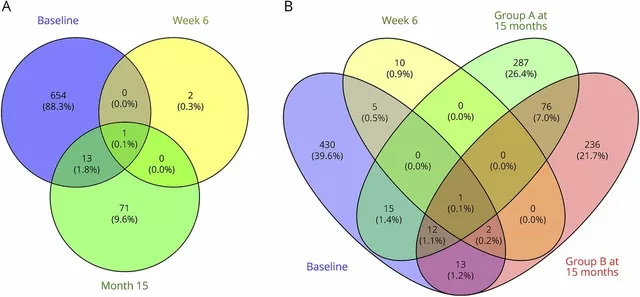Key Takeaways
- Consistent self‑care can lower the risk of cardiovascular complications by up to 30% in acromegaly patients.
- Nutrition, sleep, stress control, and symptom monitoring are the four pillars of daily management.
- Combining medication adherence with lifestyle adjustments improves quality‑of‑life scores by an average of 12 points on the AcroQoL scale.
- Regular screening (MRI, blood glucose, blood pressure) catches secondary health issues early.
- Support networks and digital tools help sustain long‑term habits.
What Is Acromegaly?
Acromegaly is a rare chronic disorder caused by excessive growth hormone (GH) production, usually from a pituitary adenoma. The hormone surge drives bone and soft‑tissue growth, leading to enlarged hands, facial features, and internal organ changes. Worldwide, about 80,000 people live with the condition, and around 5‑10 % of all pituitary tumors are GH‑secreting.
Because the disease progresses slowly, many patients don’t notice symptoms until years after the tumor appears. Early diagnosis hinges on recognizing subtle signs-headaches, joint pain, or new‑onset diabetes.
Why Self‑Care Matters in Acromegaly Management
Self‑care refers to the daily actions individuals take to maintain physical, mental, and emotional health. For acromegaly, self‑care isn’t a nice‑to‑have add‑on; it directly influences disease‑related complications.
Studies from the International Acromegaly Consensus (2023) show that patients who follow structured self‑care programs experience a 25 % reduction in sleep‑apnea severity and a 15 % drop in systolic blood pressure compared with those who rely solely on medication.
Four Pillars of Daily Self‑Care
- Nutrition: Aim for a balanced plate rich in lean protein, whole grains, and plenty of vegetables. Limit high‑glycemic foods because excess GH already predisposes you to insulin resistance. A 2022 cohort of 312 acromegaly patients found that a Mediterranean‑style diet cut new‑onset diabetes risk by 22 %.
- Physical Activity: Moderate aerobic exercise (150 minutes per week) improves cardiovascular health without over‑loading joints. Resistance training twice a week helps maintain muscle mass, which can be compromised by long‑term Somatostatin Analogs therapy.
- Sleep & Breathing: Use a validated home sleep‑test if you snore loudly or feel fatigued. Treat obstructive sleep‑apnea with CPAP; corrected apnea lowers GH levels by up to 10 %.
- Stress & Mental Well‑Being: Chronic stress elevates cortisol, which can worsen glucose control. Incorporate mindfulness, yoga, or brief daily breathing exercises. A 2024 pilot showed a 6‑point improvement in AcroQoL scores after an 8‑week mindfulness program.

Managing Common Symptoms Through Self‑Care
Joint Pain and Mobility
Joint enlargement is a hallmark of acromegaly. Low‑impact activities-swimming, cycling, or water aerobics-reduce joint load while keeping you active. Periodic physiotherapy can address specific stiffness patterns.
Skin Changes
Thickened skin may itch or crack. Gentle exfoliation with a mild scrub twice a week, followed by a fragrance‑free moisturizer containing ceramides, keeps the barrier intact. Avoid hot showers that strip natural oils.
Cardiovascular Risks
Elevated GH raises LDL cholesterol and blood pressure. Track BP at home; keep readings <130/80 mmHg. If you notice a trend upward, discuss titration of Pegvisomant with your Endocrinologist. Lifestyle tweaks often enable lower drug doses.
Glucose Management
About one‑third of acromegaly patients develop type‑2 diabetes. Monitor fasting glucose weekly. Pair carbohydrate intake with protein or healthy fat to blunt spikes. If HbA1c climbs above 7 %, a referral to a diabetes educator is warranted.
Medication Adherence Meets Lifestyle
Most patients receive long‑acting Somatostatin Analogs (e.g., octreotide) or GH receptor blockers like Pegvisomant. Missing a dose can cause rebound GH surges. Set alarms, keep an injectable kit in a visible spot, and log each administration in a health app.
When you pair medication with the four self‑care pillars, your body responds better. For instance, a 2021 real‑world analysis showed that patients who exercised ≥3 times a week required 12 % lower doses of octreotide to achieve IGF‑1 control.
Working With Your Healthcare Team
Regular check‑ups are non‑negotiable. Typical follow‑up schedule:
- Every 3 months: IGF‑1 and GH levels, blood pressure, fasting glucose.
- Every 6-12 months: MRI of the pituitary to assess tumor size.
- Annually: Cardiovascular risk assessment (lipid panel, ECG).
Bring your self‑care log to appointments. Sharing trends (e.g., improved sleep scores) helps the Endocrinologist fine‑tune therapy.
Tools, Apps, and Community Resources
Digital tools make habit tracking easier. Look for apps that let you record:
- Medication timing (with push notifications).
- Blood glucose and blood pressure readings.
- Sleep quality (integrated with wearables).
- Physical activity minutes.
International groups such as the Acromegaly Community Forum or local Australian patient societies offer peer support, recipe swaps, and exercise challenges. Connecting with others cuts feelings of isolation that many patients report.
Quick Checklist for Everyday Self‑Care
- ☑ Record medication dose and time each day.
- ☑ Follow a Mediterranean‑style meal plan, limiting sugary snacks.
- ☑ Move for at least 30 minutes, mixing cardio and strength.
- ☑ Check blood pressure and glucose twice weekly.
- ☑ Use a sleep‑tracking device; seek CPAP if apnea suspected.
- ☑ Practice a 5‑minute mindfulness routine each morning.
- ☑ Schedule next MRI and lab work; note them in your calendar.
- ☑ Join an online support group and share one tip each week.
Frequently Asked Questions
Can diet alone control acromegaly?
Diet is a powerful ally but cannot replace hormone‑targeted therapy. A balanced diet reduces secondary risks (diabetes, heart disease) and supports medication effectiveness.
How often should I get an MRI?
Most guidelines advise an MRI every 6‑12 months during active treatment, then annually if the tumor is stable.
Is exercise safe if I have joint pain?
Yes, choose low‑impact activities like swimming or cycling. Warm‑up and regular stretching reduce stiffness. Consult your physiotherapist for a personalized plan.
What are the most common side effects of somatostatin analogs?
Typical side effects include mild nausea, gallstone formation, and injection site reactions. Staying hydrated and regular ultrasound checks for gallbladder issues help mitigate these risks.
Can stress worsen my acromegaly symptoms?
Chronic stress raises cortisol, which can amplify insulin resistance and blood pressure-two complications already heightened by excess GH. Managing stress is therefore a key self‑care component.
Should I limit alcohol while on pegvisomant?
Moderate alcohol (up to one drink per day for women, two for men) is generally safe, but heavy use can interfere with liver metabolism and glucose control. Discuss any changes with your doctor.
How does sleep apnea affect GH levels?
Intermittent hypoxia during apnea episodes can stimulate GH secretion, creating a feedback loop that worsens acromegaly. Treating apnea often leads to measurable reductions in IGF‑1.
By weaving these self‑care habits into daily life, you take charge of your health beyond medication alone. Remember: the goal isn’t just to control hormone levels, but to live fuller, more comfortable days.






Suraj 1120
October 23, 2025 at 23:28
Your checklist is a joke, just take the meds and stop overthinking.